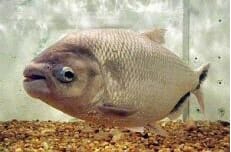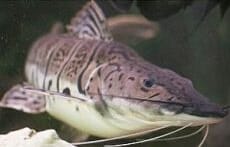The Amazon currently produces approximately 200,000 tonnes of fishery products – around 20 per cent of total national output, each year. The gross annual income generated by the activity is around 470 million reals (US$ 199 million). Those figures, however, may increase up to four times in case there is investment in improvement of the fleet, the infrastructure for processing, storage and encouragement to the consumer market. The projections were taken from the Sustainable Amazon Plan (PAS), a reference point to the problems and potentialities of the Amazon.

The governmental plan regards the Amazon Basin as having vast fishery resources and an exceptional potential for aquaculture. But the government admits that, despite this huge social ballast that fishery sustains, the activity is still of little economic importance, and aquaculture is relatively incipient. The regional production chan concentrates in the cities of Belém (in the state of Pará), Manaus (Amazonas), Santarém (Pará) and Tabatinga (Amazonas), but the trend is for it to expand with the potential of the Amazon "brand," which already produces added value and its own marketing.
Fishery in the Amazon is divided into six modalities. The predominant one is that of subsistence, practised by families and small communities. Also practised is multi-specific commercial fishing. This category is destined to supply regional urban centres and is usually carried out by fishermen who reside at those centres. Mono-specific commercial fishing, in turn, is destined for exports and aimed mostly at capturing catfish, among them the Laulao catfish (Brachyplastystoma vaillantii) and the Tiger catfish (Pseudoplatystoma fasciatum).
The reservoirs of the large hydroelectric plants in the Amazon, among them Tucuruí and Balbina, harbour the so-called "dam" fish. Also practised in black-water rivers is sport fishing, whose target-fish is the peacock bass (Cichla monoculus), and ornamental fish are sought after in the rivers Negro (Amazonas), Tapajós (Amazonas) and their tributaries. Ornamental fishing has been giving rise to a series of conflicts due to the action of biopirates that operate in the region. Every now and then, the Federal Police (FP) shipments of said fish as biopirates attempt to illegally exit Brazil.
Employment and income

Besides being an important source of employment and income, fishery products, including shrimp and crab, constitutes a staple food for the people of the Amazon. This fact can be perceived by comparing average consumption in the country. Whereas the average consumption in Brazil is 6.8 kilogrammes per capita/year, in the Amazon an average of 50 kilogrammes per capita are consumed each year.
In some regions of the Amazon, however, the consumption level is much higher: in the Lower Amazon, for example, each person consumes an average of 134.7 kilogrammes per year. The volume is also high in the lower portion of the Solimões river (a.k.a. Lower Solimões), 178.9 to 219 kilogrammes, and in the Upper Solimões, from 182.5 to 292 kilogrammes. This is the highest consumption rate in the world, surpassing Japan, which has a rate of 90 kilogrammes per person each year.
Presently, extractive fishing in continental waters caters to only one eighth of demand. This means that there is vast potential for aquaculture both in the Amazon and domestic market and in the international one. Estimates show that the region has potential for producing from 270,000 to 920,000 tonnes /year. The sector may generate 600,000 direct and indirect jobs (72 per cent of which in the area of fishing and subsistence), as well as revenues of US$ 200 million a year.
Food security
To the government, aquaculture in the Amazon is an activity that might potentially mitigate the effects of overexploration of some species that have commercial value, and it may also represent an alternative for food security and generation of many job positions in various communities. Thus, the activity may also contribute to reduce deforestation and promote quality of life in several areas in the region.
In order for that to become reality, a few obstacles have yet to be overcome. Among them are the lack of adequate farming technologies, shortage of inputs, qualified workforce, insufficient infrastructure and lack of technical assistance to farmers. Currently, there are some successful experiences in the farming of native species, mostly in Amazonas and Pará. There, the Black Pacu (Colossoma macropomum), the third most cultivated species in Brazil; the Yamú (Brycon amazonicus) and the Pirarucu (Arapaima gigas). The Pirarucu is considered the Brazilian codfish.




